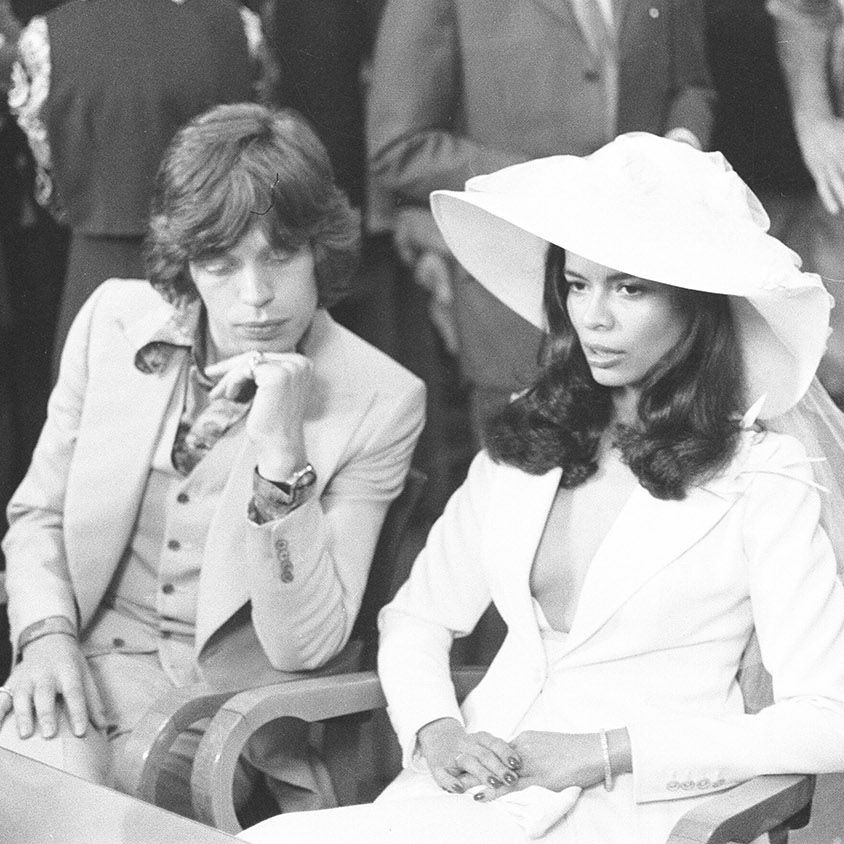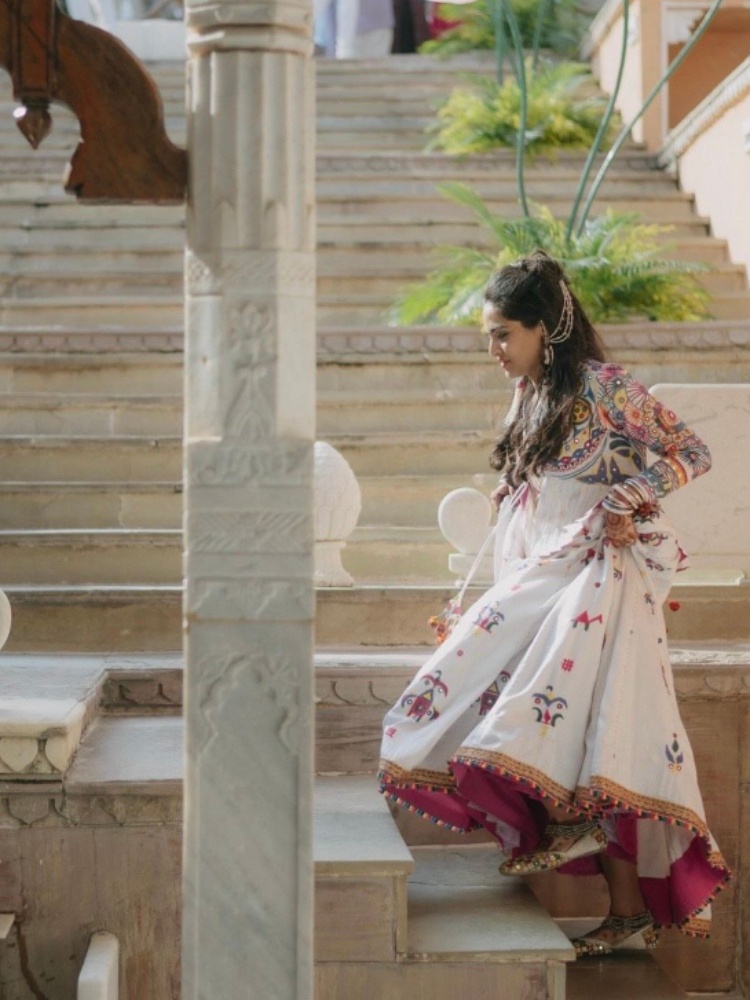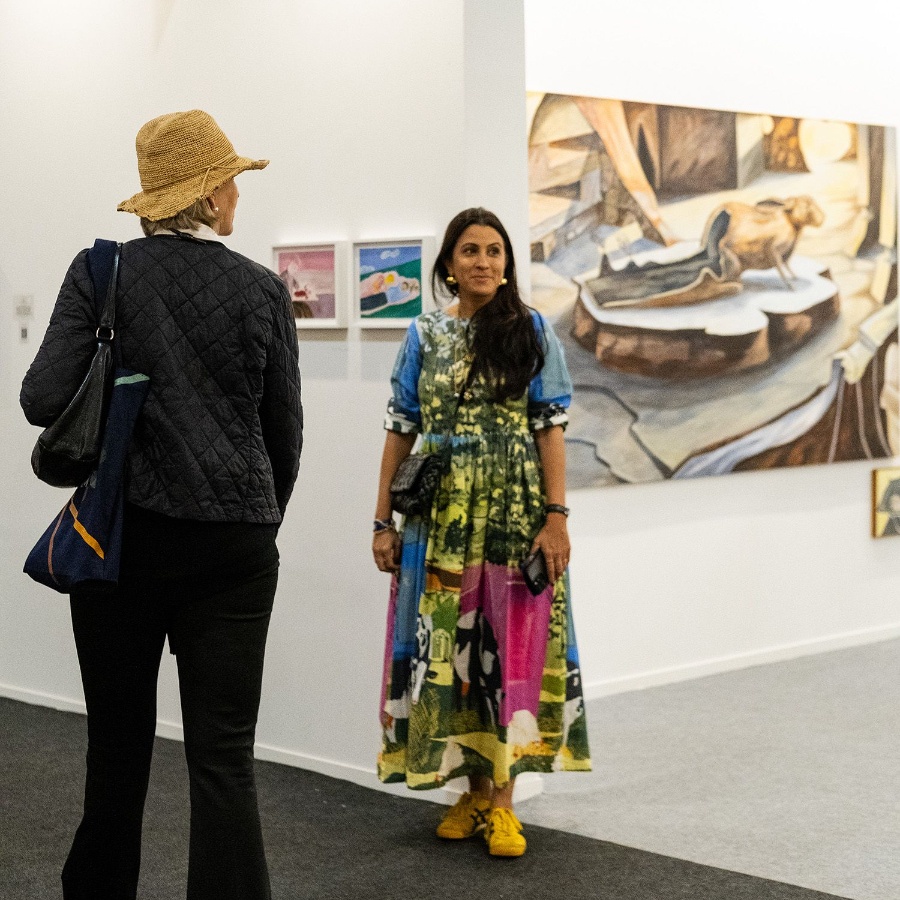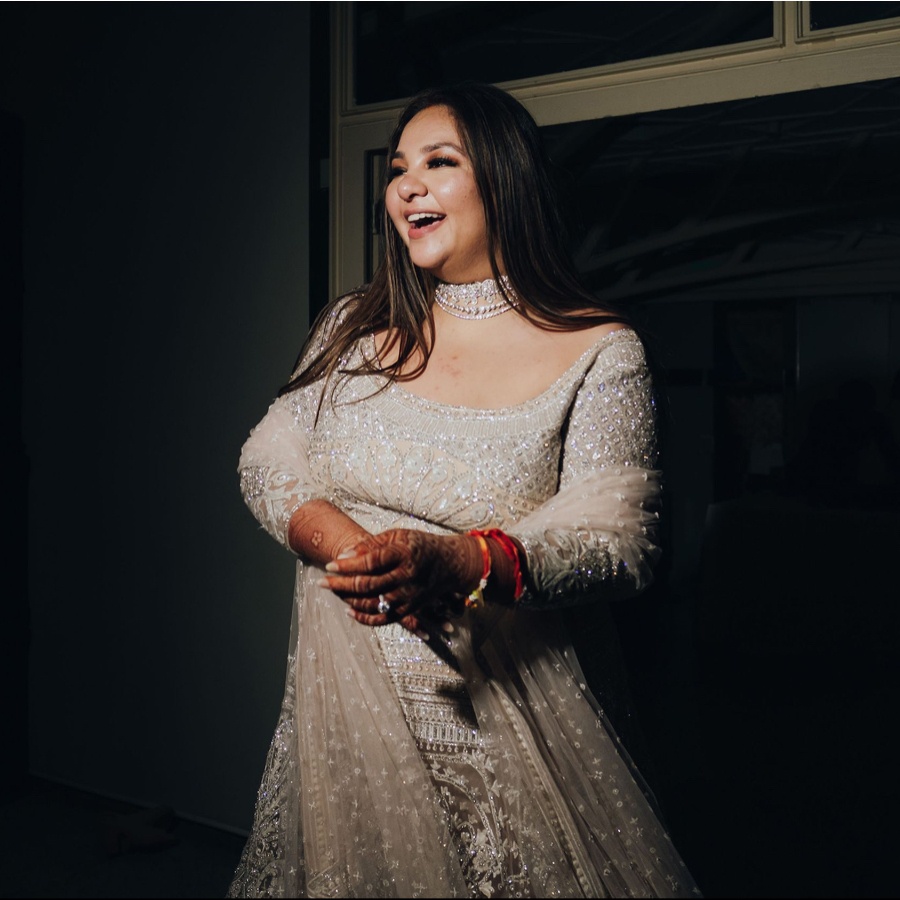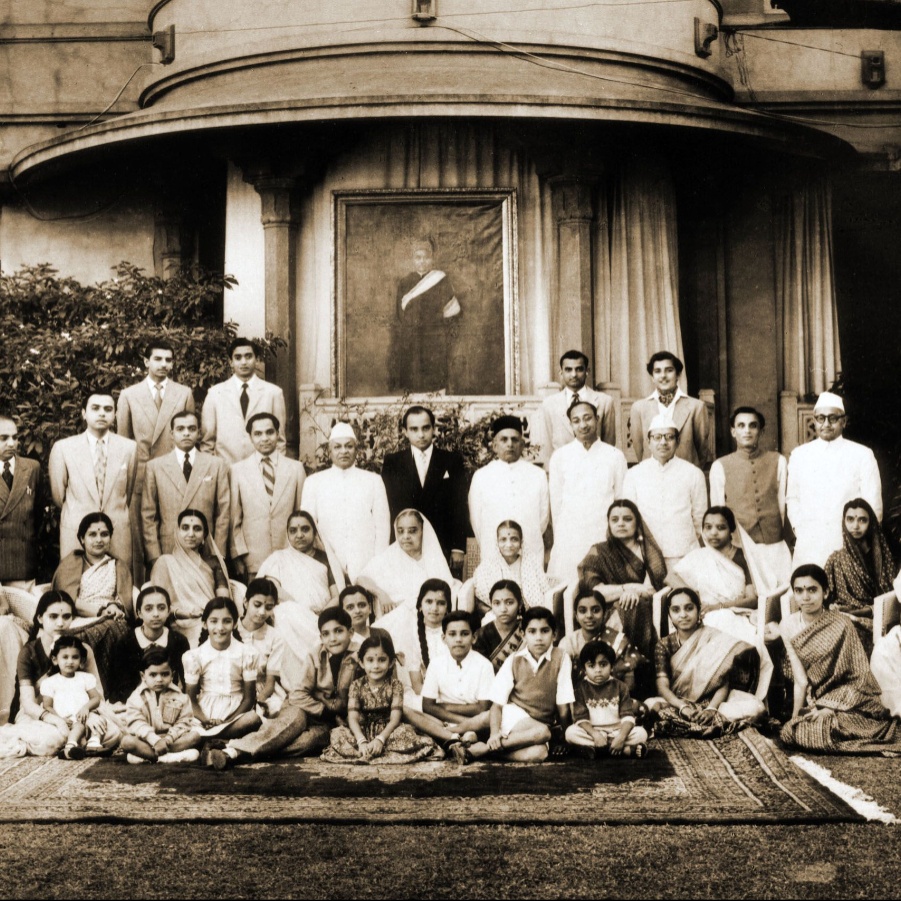When Malvika Vaswani started planning her 230-person wedding to Sankalp Dayani at Udaipur’s Hotel Fateh Garh in 2023, she already knew she wanted to try and make it as eco-friendly as possible. “I don’t know how sustainable a wedding can truly be, but I was just aghast at the amount of waste these kinds of events in general generate,” said the jewellery designer. She decided to tackle it step by step, like a puzzle that needed solving. That meant working closely with her wedding planners to locally source all the flowers, décor, and food, placing water stations, where possible, to minimise the use of plastic bottles, and segregating all the final wet and dry waste. Instead of distributing gifts to guests, the couple planted 300 trees near Vaswani’s family home in Mumbai. “We actually turned that into a ritual where we planted 30 to 40 trees ourselves and shot our pre-wedding photos,” she recalls.
It was while researching organisations to help with the tree planting that Vaswani came across Greenmyna, an eco-friendly wedding planning consultancy by husband-and-wife duo Ashwin Malwade and Nupur Agarwal. They founded Greenmyna after planning their own wedding in Pune in 2019. “We took a lot of cues from our parents’ wedding,” explains Malwade. “There was no single-use plastic back then, so that made us think about the alternatives we could work with instead. It was also seen as criminal to waste food. And lots of other things in terms of how they did their shopping, their choice of venue, or the food that was served.”
According to Malwade, the average 500-person Indian wedding generates around 2,000 to 3,000kg of combined wet and dry waste. And then there are those at the higher end of the spectrum, like a high-profile wedding that took place in Auli, Uttarakhand, in 2019 that left behind 321 quintals, or 32,100kg, of waste, which cost ₹8 lakh for the local municipality to clear.
But having a sustainable wedding requires a lot of thought and planning. “The first thing we do is try and understand what sustainability means to the couple,” says Malwade. “There are different levels of sustainability. My definition of a successful, sustainable wedding is one where zero waste ends up in a landfill.” But can weddings ever be zero waste? Apparently yes, through smart waste segregation. “Sometimes the non-recyclables like floral foam, confetti, or plastic flowers are harder to tackle but by planning well you can avoid those.” For those who would like to start small, he recommends just starting with eliminating single-use plastic—replace all the small plastic bottles by having water stations.
The décor dream
Indraja Khare, the co-founder of Nose to Tail, explains that when it comes to wedding décor, flowers are the biggest waste generators. “They are used in such a large volume and people tend to think that it’s not harming the environment since it’s natural. But with every arrangement, you also get synthetic floral foams, or oasis, and not every flower can be recycled into something useful. That’s why we only use local or seasonal flowers—say marigold or rajnigandha—and work with organisations that can turn them into things like incense or holi colour afterwards,” says Khare. The second biggest byproduct is flex, the durable PVC sheets that are used to build everything from sets to dance floors. “We prefer to work with alternatives like fabric, upcycled wood, cardboard, or even mirrors.” Khare and her business partner, Aishwarya Lonial, both graduates of the MIT Institute of Design, Pune, specialise in finding solutions to typically wasteful décor set-ups. At a recent mehendi ceremony in Udaipur, they swapped traditional flowers for elegant vases filled with bunches of dried ferns and handcrafted shola flowers. Structures were constructed using cane and bamboo, origami paper elements brought colour, and woven cane lamps provided lighting as the sun set.
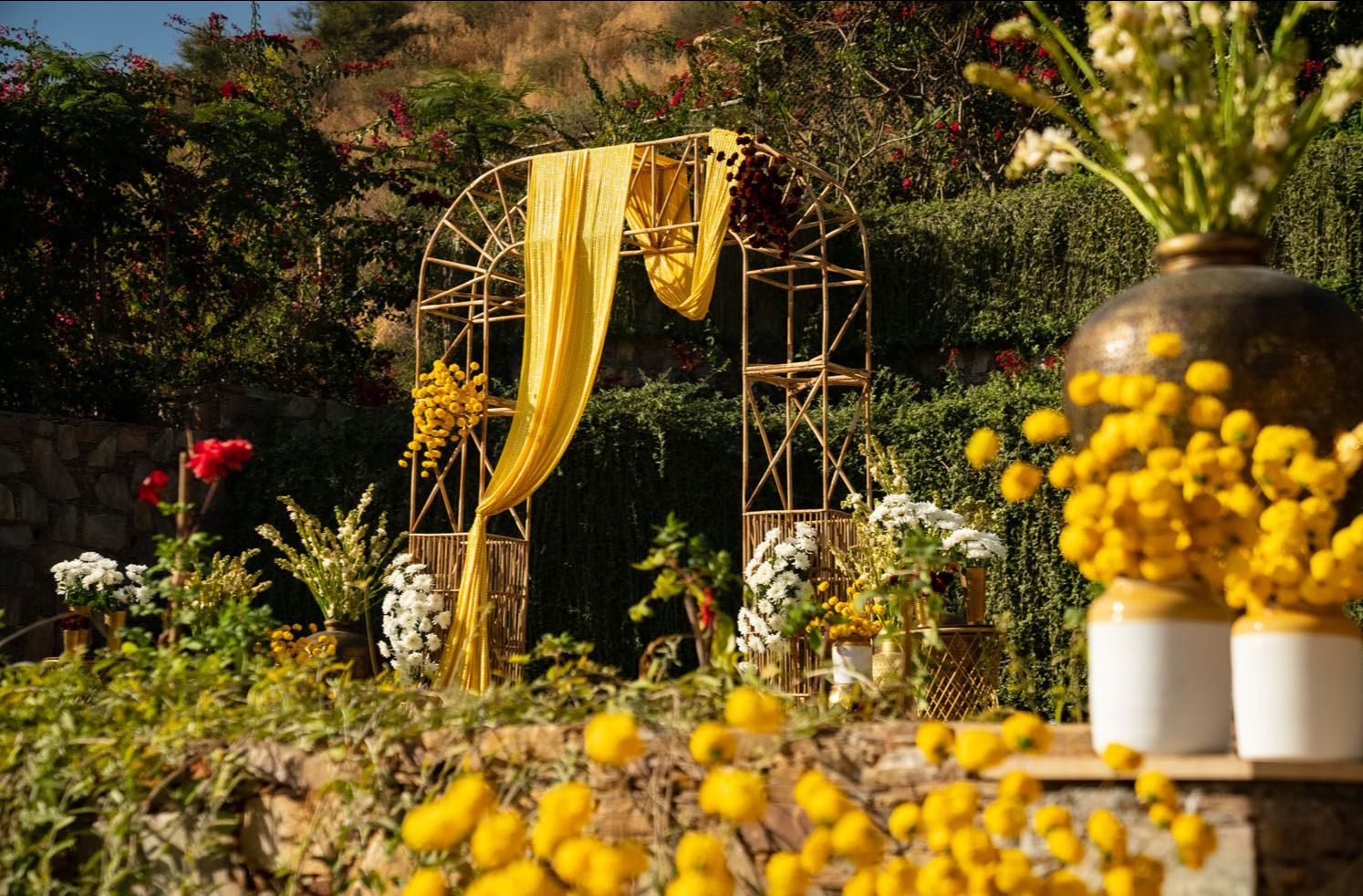
Materials like cane, bamboo, textiles, or recycled cardboard and old mirrors make for sustainable decor alternatives. Courtesy: Nose to Tail
Every meal counts
Once you’ve decided you’re going to have a sustainable wedding, the next step is to get people to confirm their RSVP so that you can inform your caterer accordingly. Instead of a buffet, opt for live food counters or more traditional banana leaf or thali set meals, which usually result in less food wastage. Vaswani took things a step further by convincing the hotel to let Greenmyna into the kitchen so they could calculate the amount of food left over after each function and make changes to the menu accordingly. “We actually had a 75 per cent reduction in food wastage from the first event to the last, which was remarkable,” reveals Malwade. Khare also recommends working with local organisations that take food donations and finding sustainable alternatives for things like cutlery and straws.


